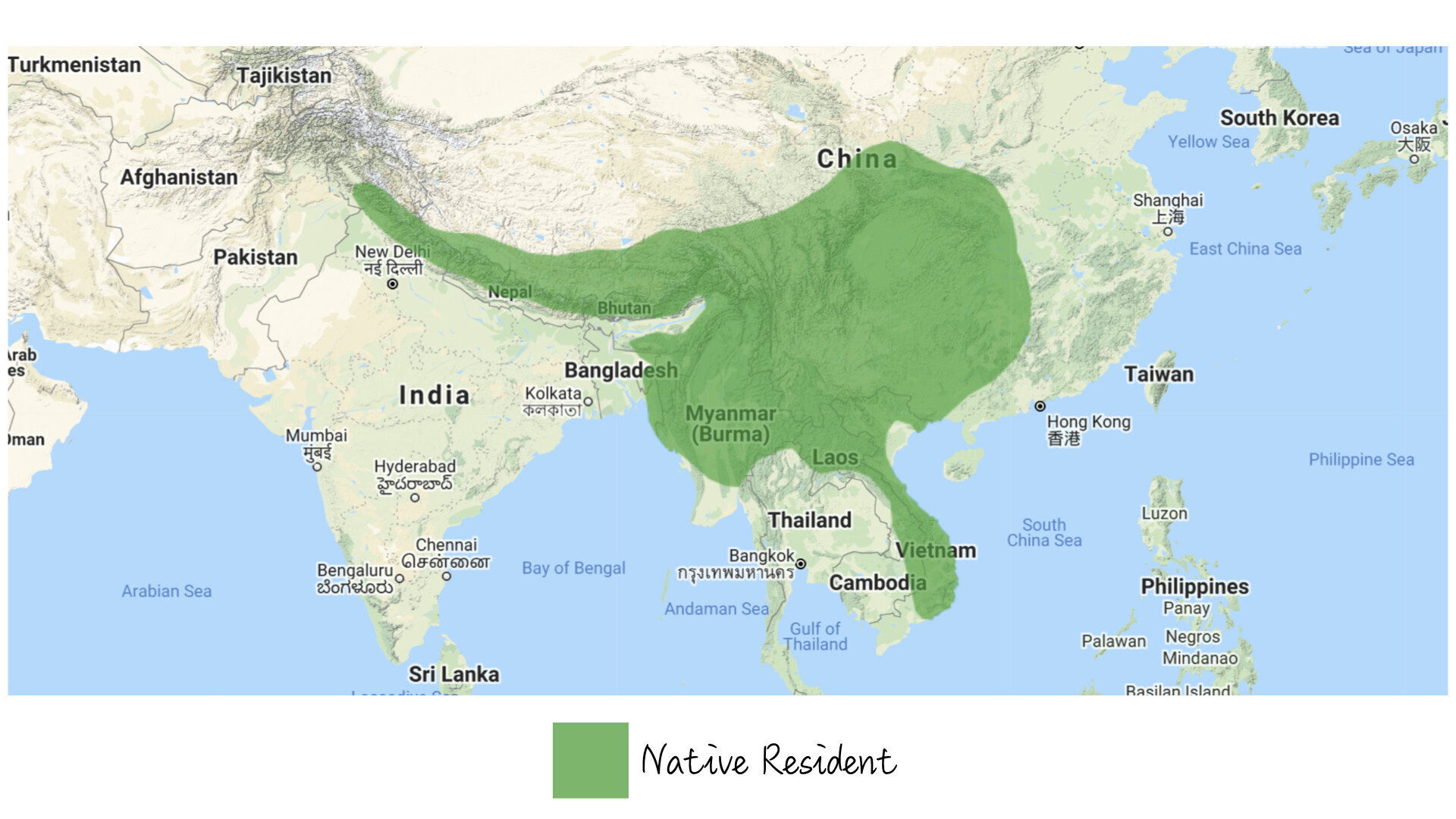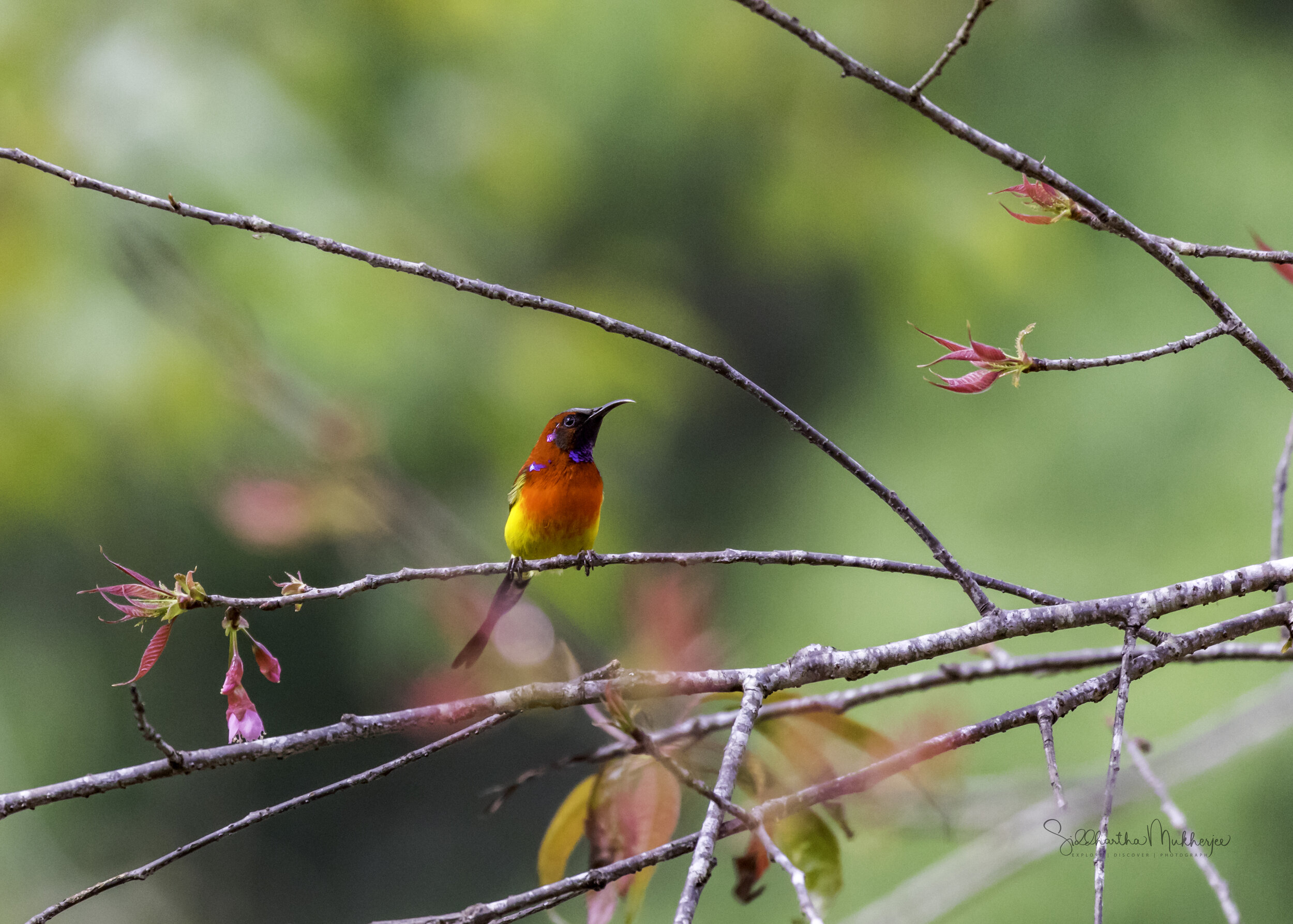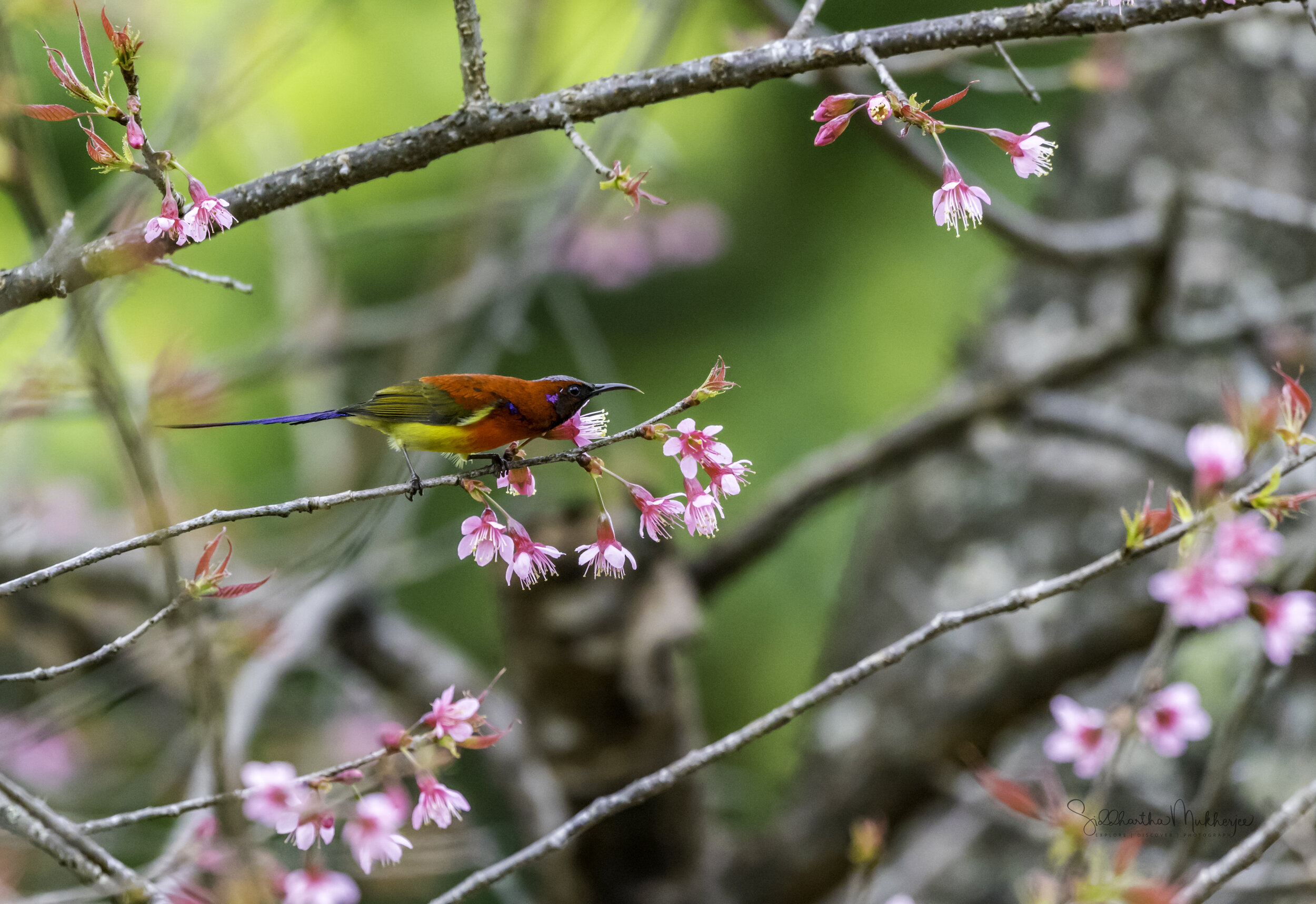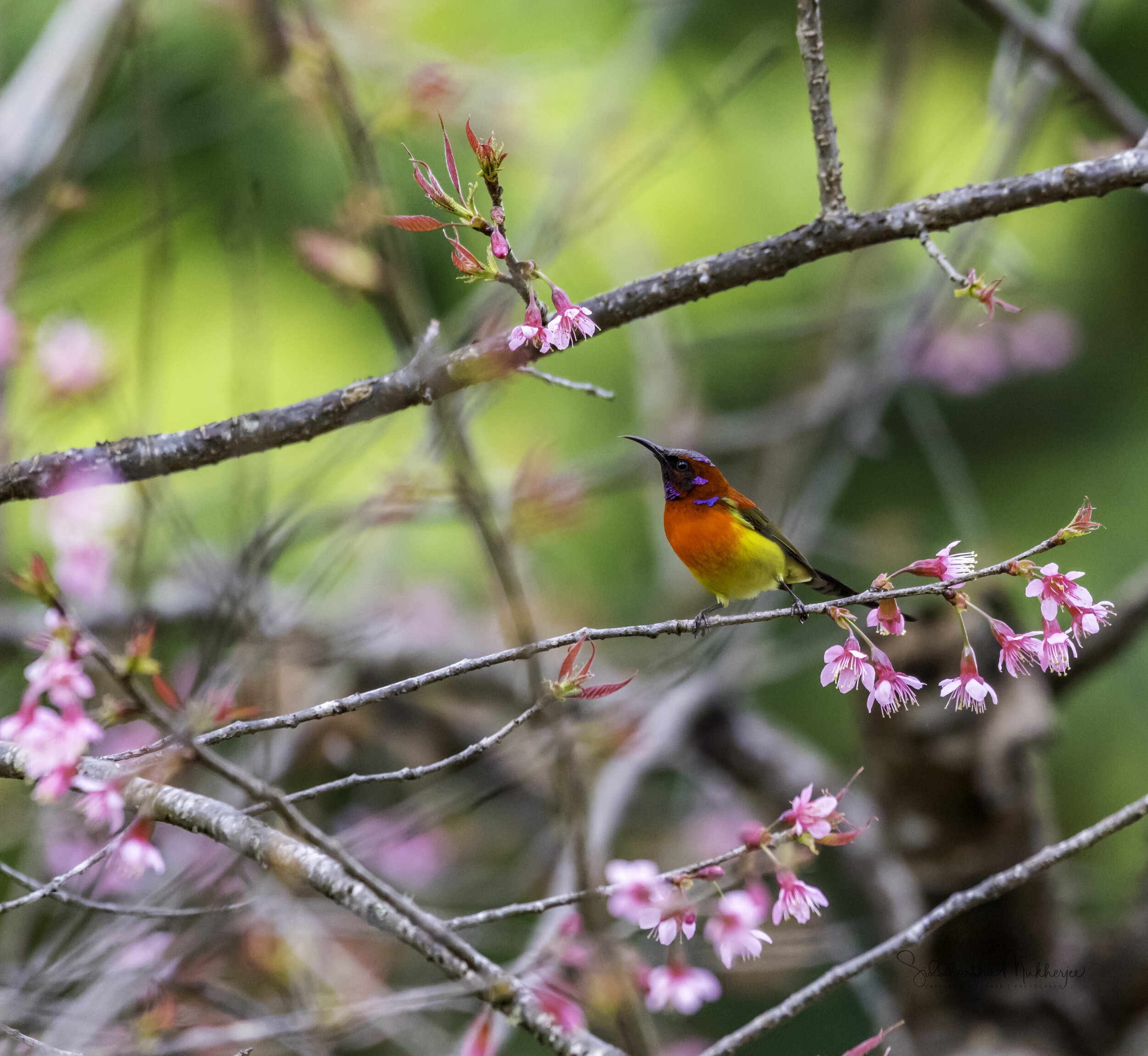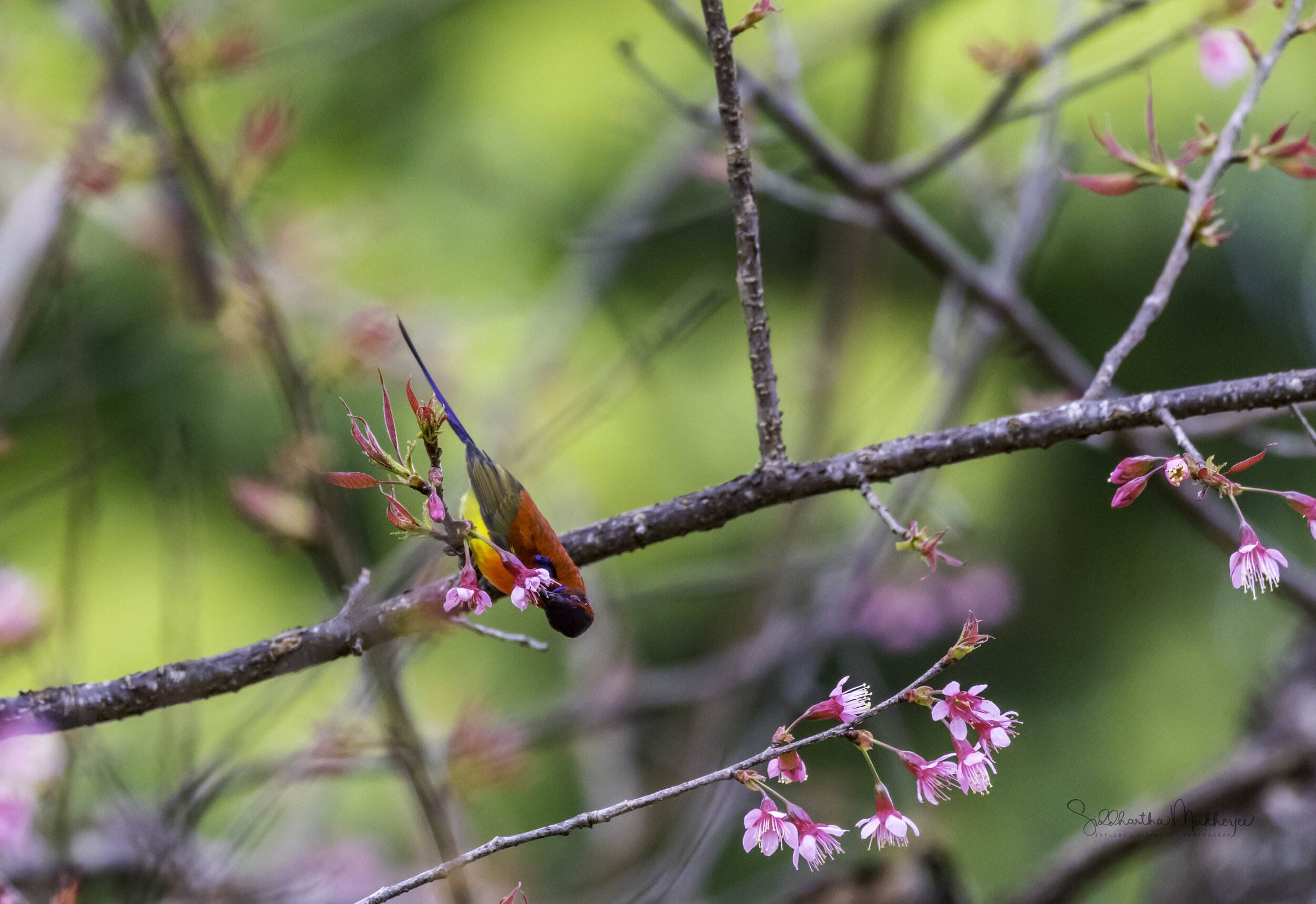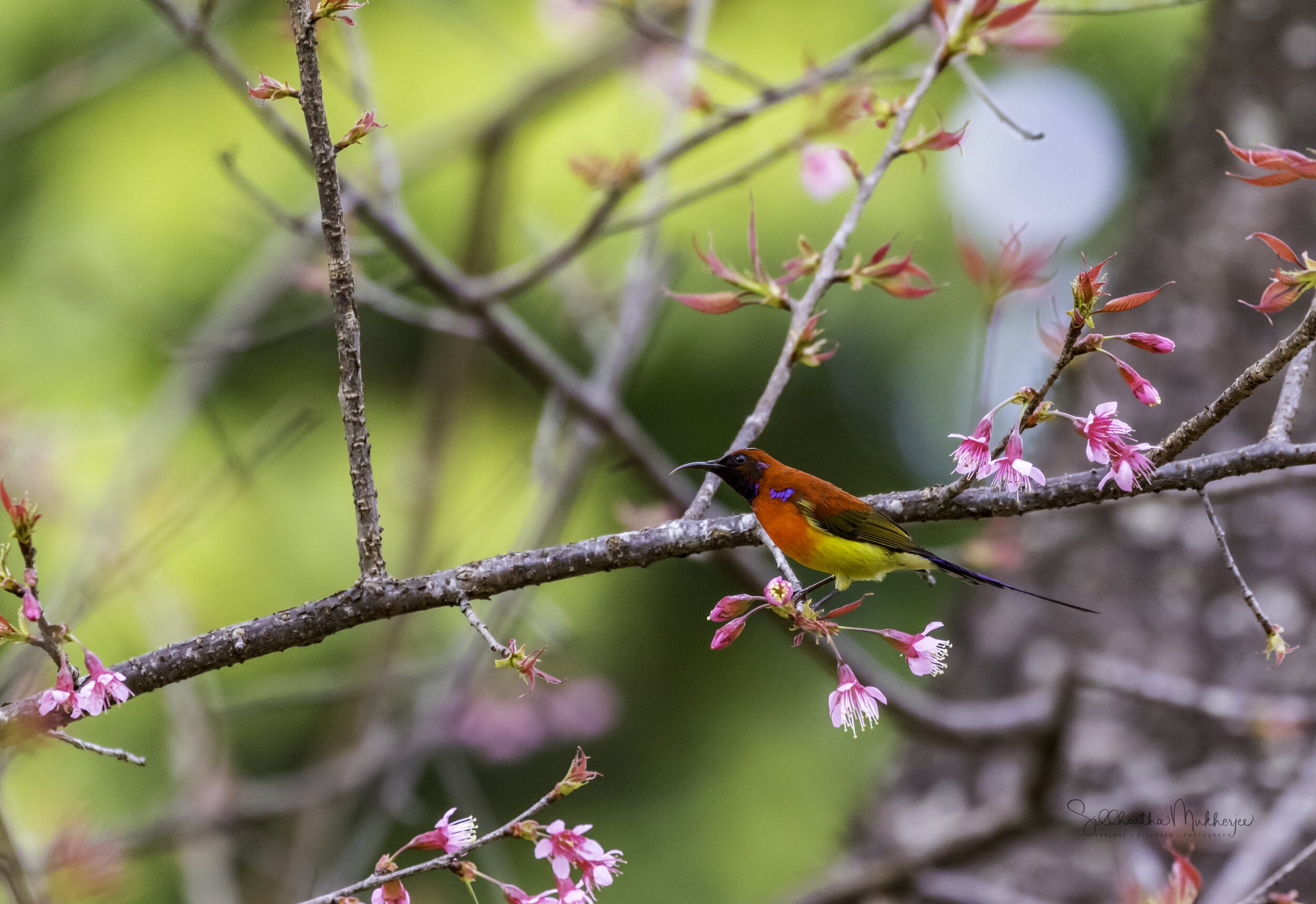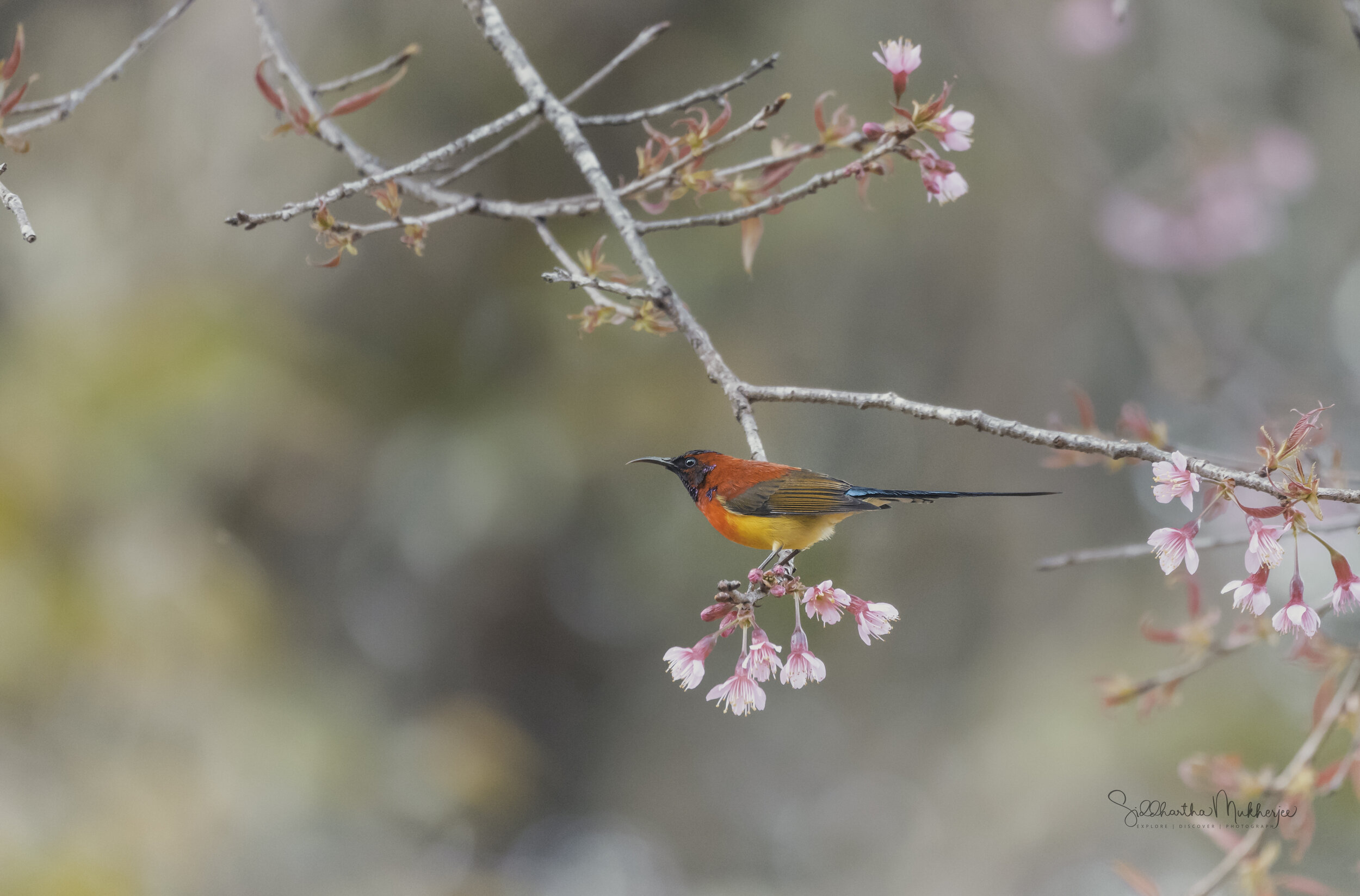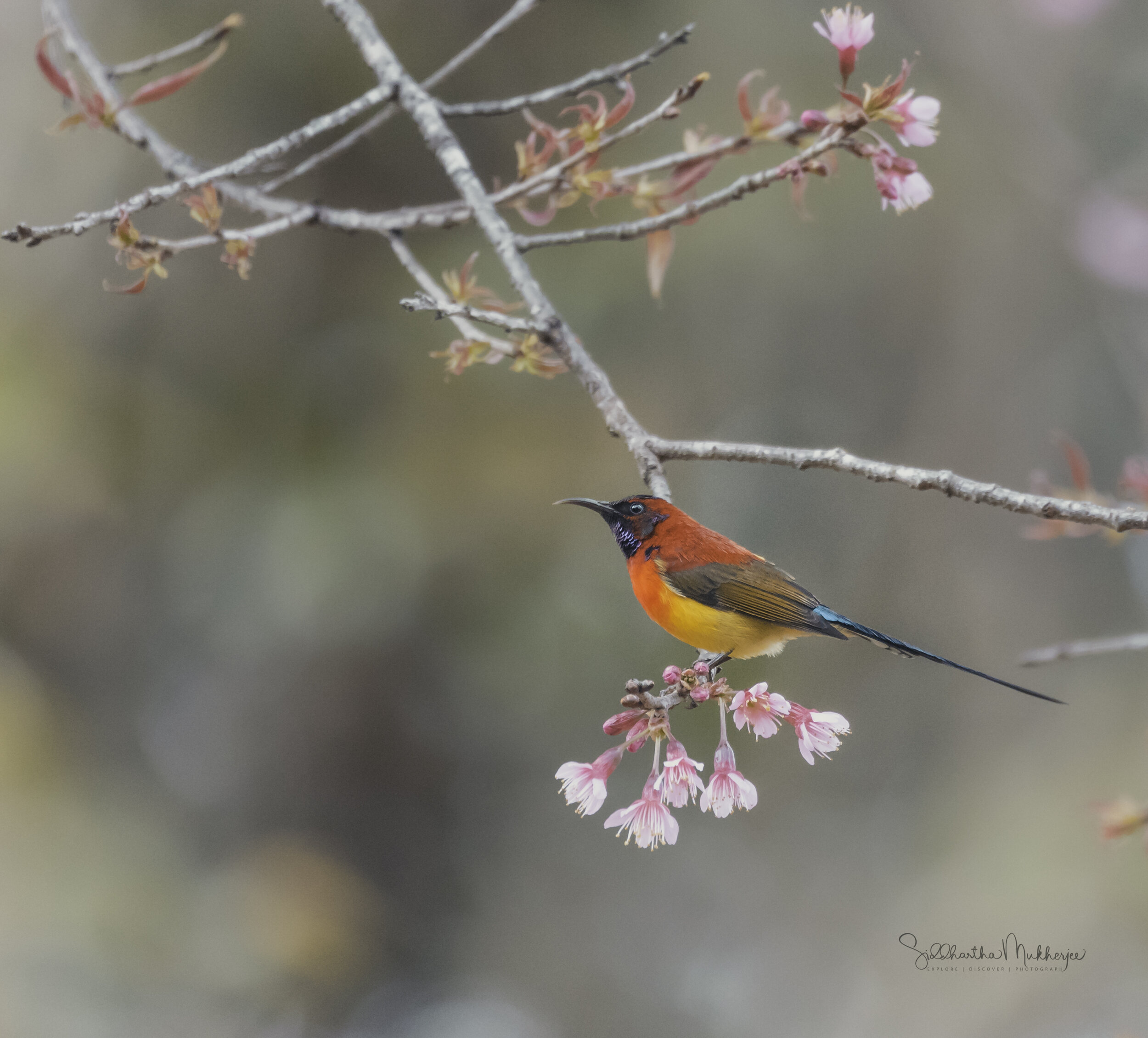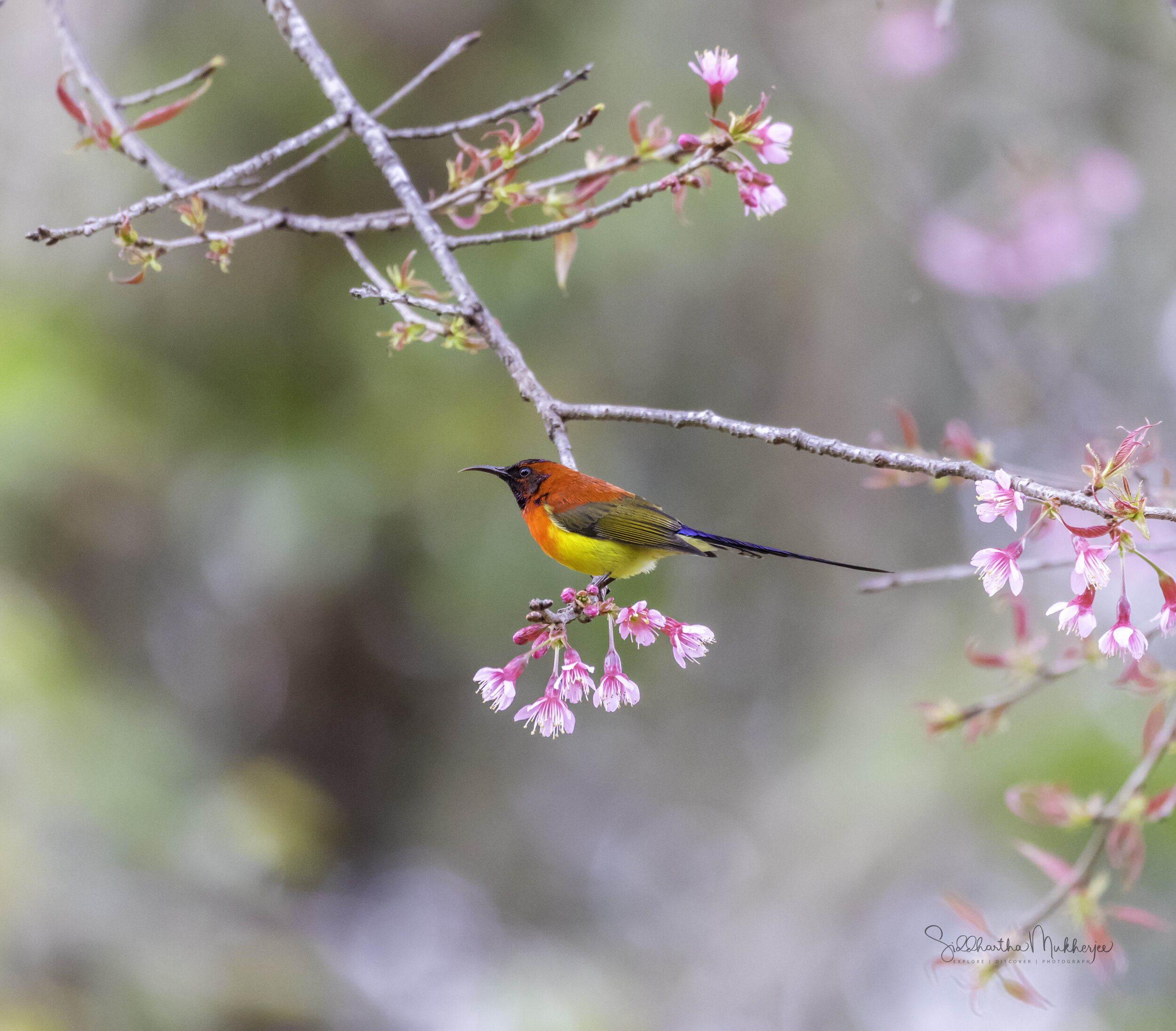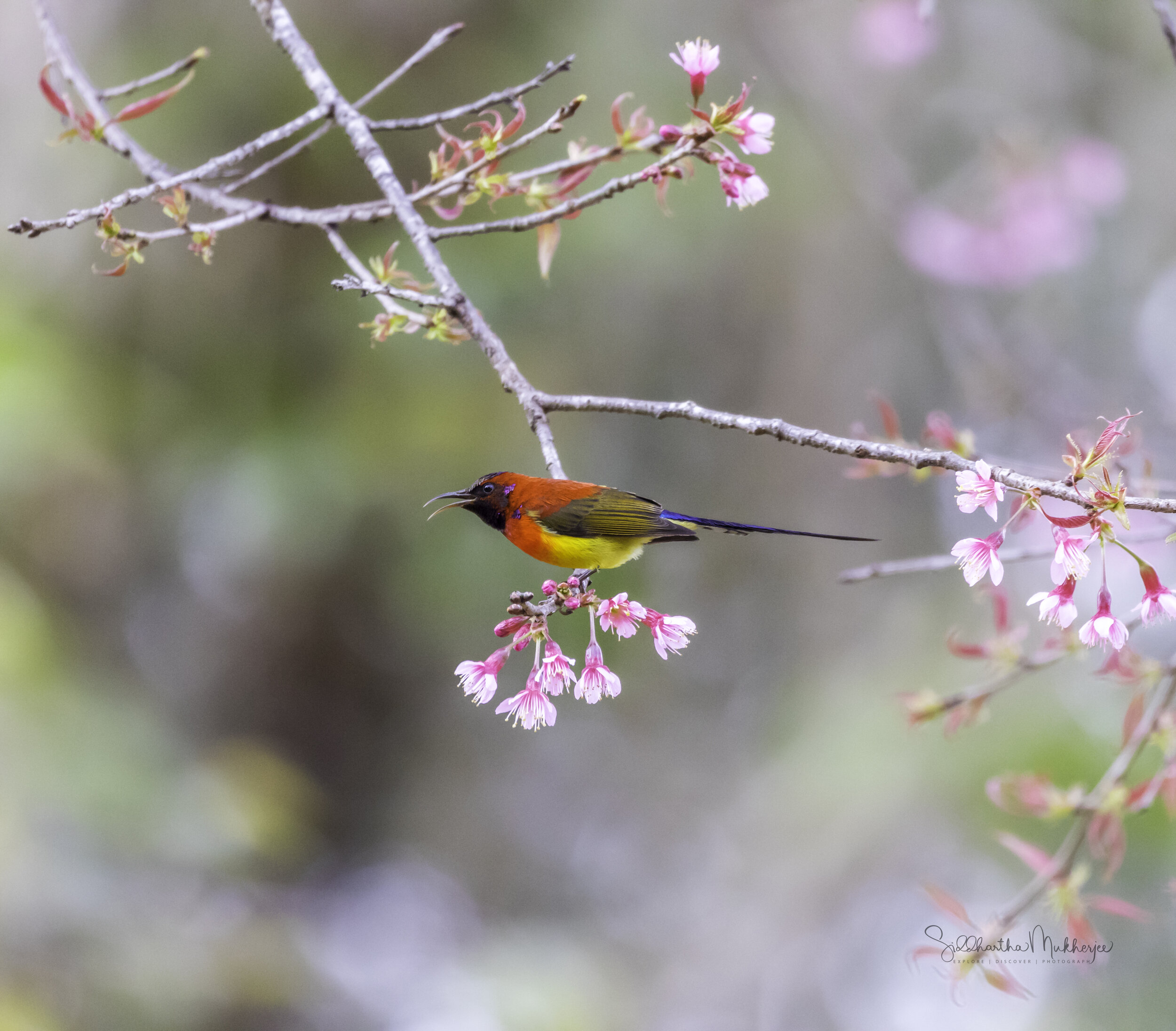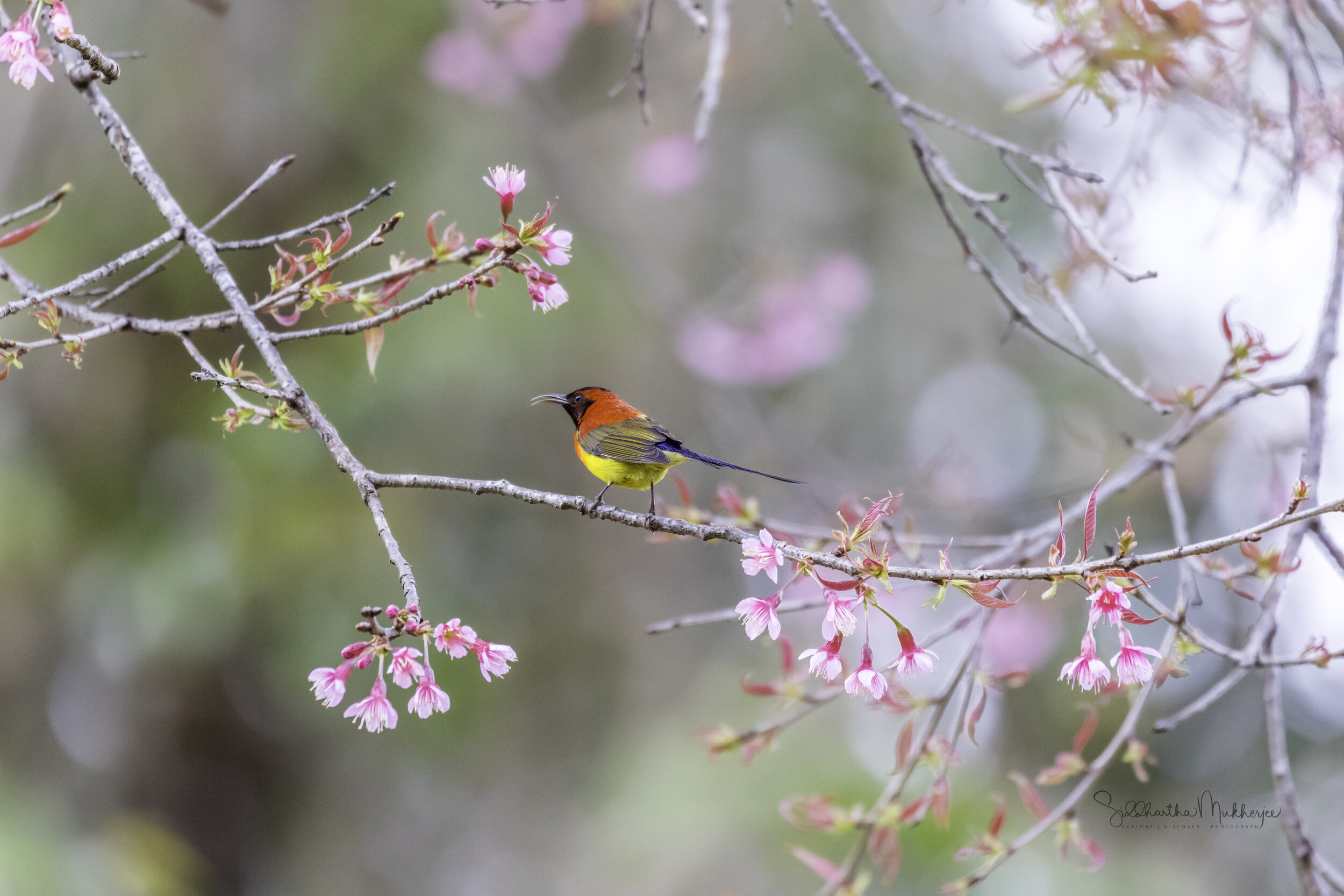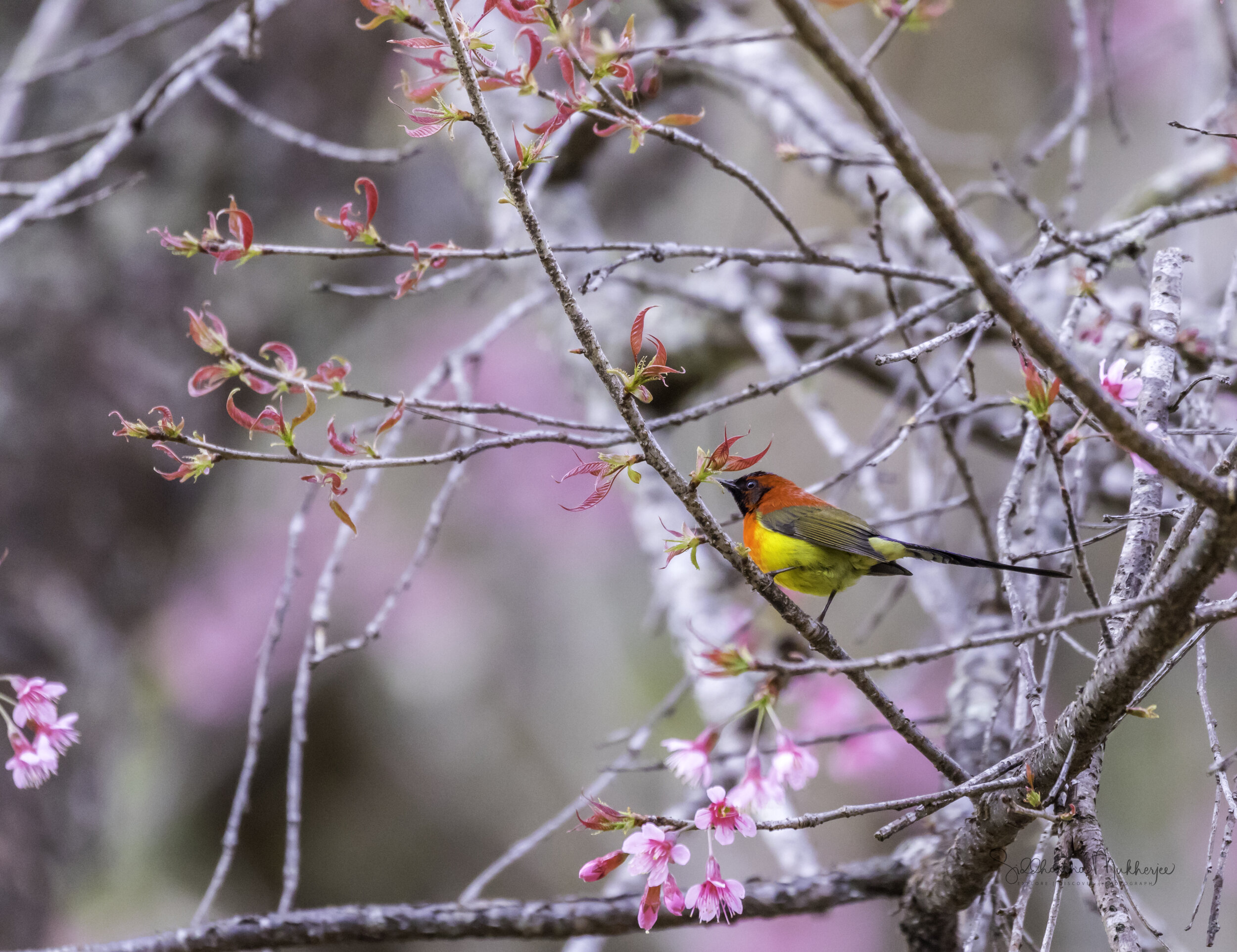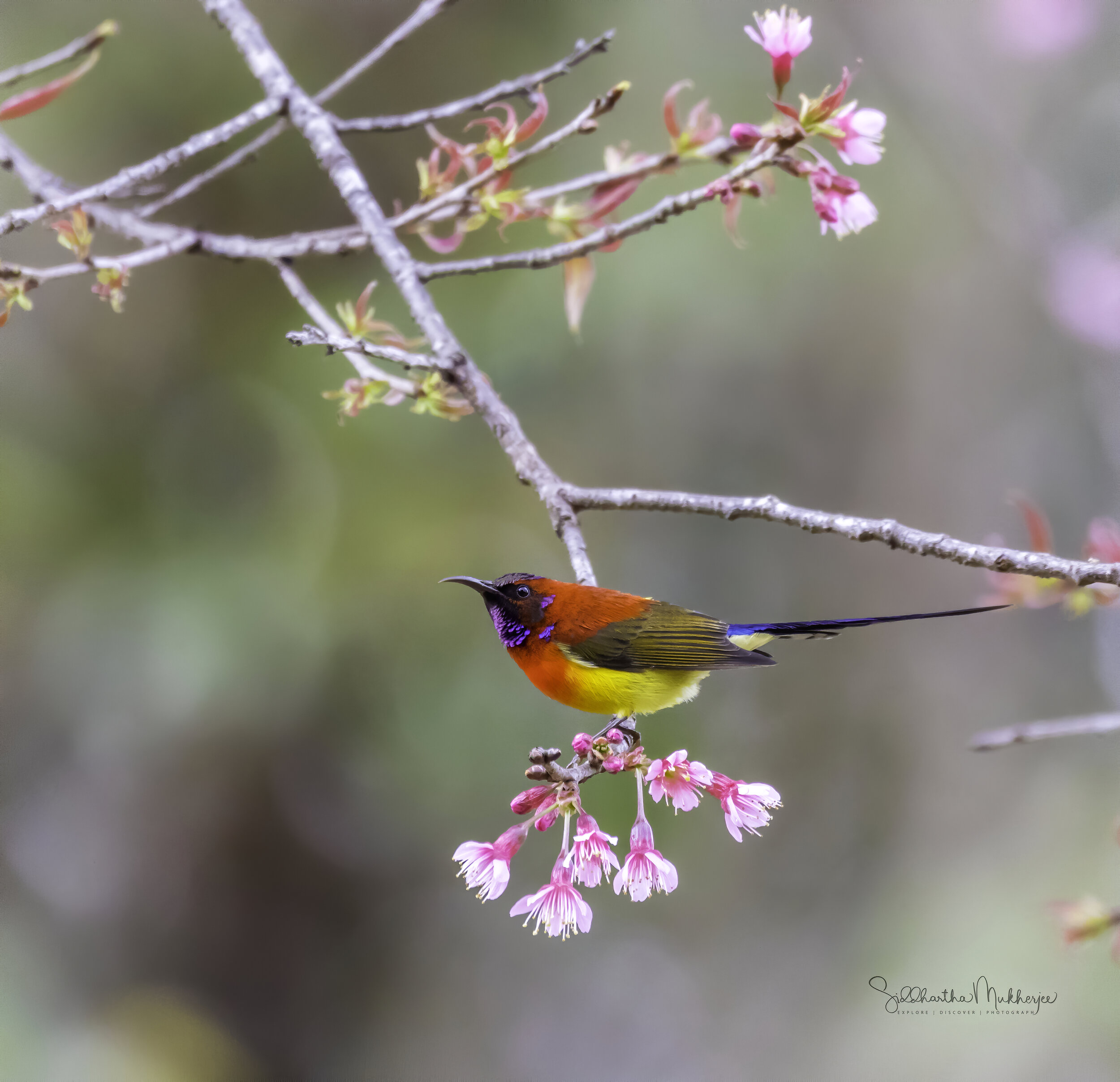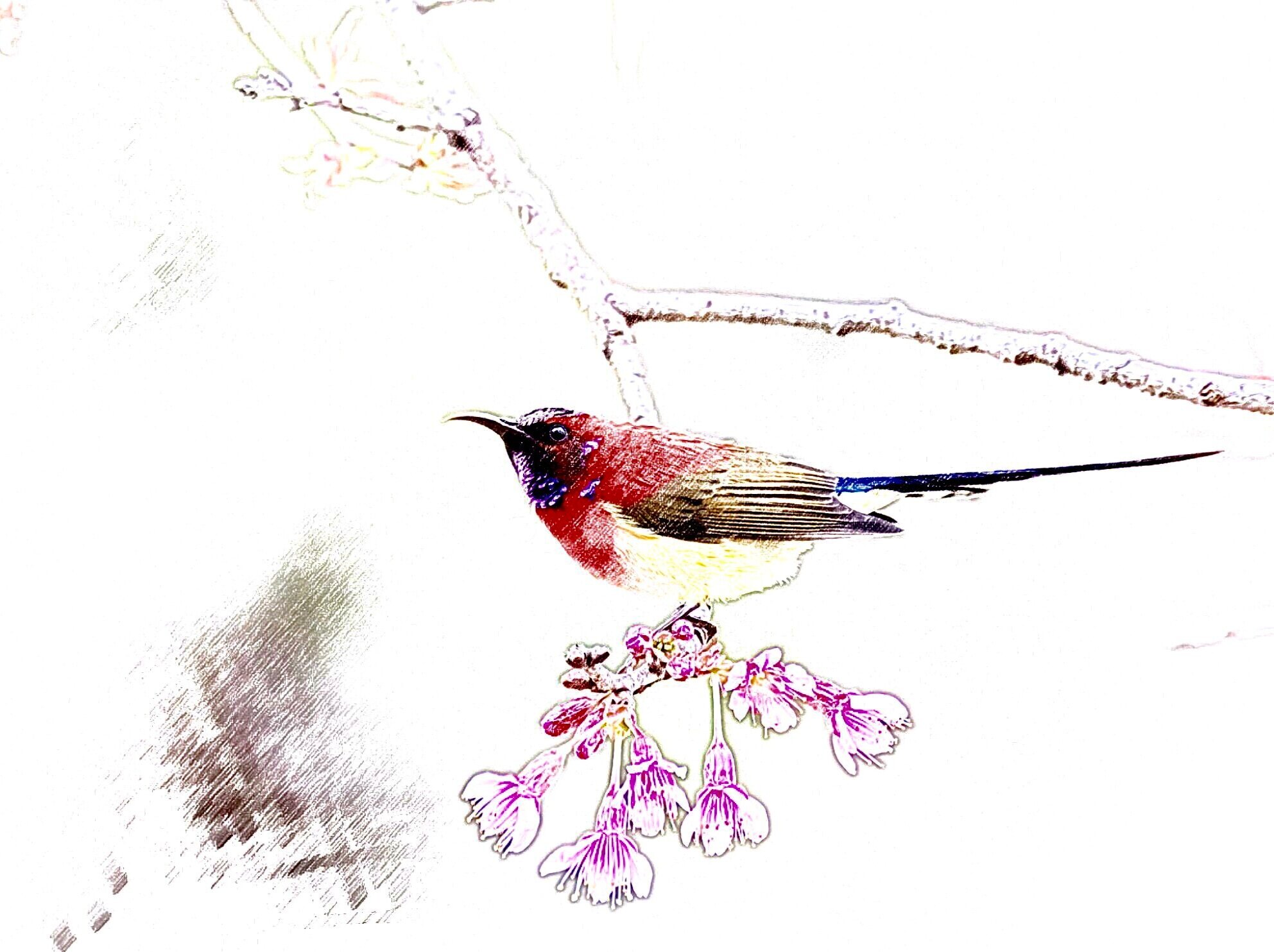Mrs. Gould’s Sunbird
Aethopyga gouldiae
Doi Pha Hom Pok National Park, Chiang Mai, Thailand
In early April I had written about the Birds on the Doi which was an overview of the four mountains in North Thailand and the abundant wild and bird life inhabiting them. Today I will talk about one of the most beautiful birds I have seen there - Mrs. Gould’s Sunbird.
About 685 kilometers to the north of Bangkok lies the former seat of the ancient Lanna Kingdom and is considered one of the most scenic provinces in the country given its mountain ranges, valleys, flora and fauna. A land of misty mountains and colourful hill tribes, a playground for seasoned travellers, and a delight for adventurers. Despite its relatively small size and blissful calm, Chiang Mai truly has it all, a city that is still firmly Thai in its atmosphere and attitude. It is the second-largest changwat (province) of Thailand. Bordered by Chiang Rai to the northeast, Lampang and Lamphun to the south, Tak to the southwest, Mae Hong Son to the west and the Shan State of Myanmar to the north. Located in a verdant valley on the banks of the Ping River, Chiang Mai was founded in 1296 as the capital of the ancient Lanna Kingdom. Today it is a place where past and the present seamlessly merge with modern buildings standing side by side with venerable temples. Of all the places I have visited in Thailand, Chiang Mai with its forests and mountains and the historic city of Ayutthaya are by far my favourites.
The word Chiang itself is from North Thai, or Lanna, meaning town or city and Mai means new making Chiang Mai the New City as it was founded later than Chiang Rai, the earlier capital of King Meng Rai. The districts in the province are called amphoe, and sub-districts are called tambon. Another twist is the use of Nakhon (or Nakorn or Nakhorn), derived from the Sanskrit word Nagara, also means city, though strictly speaking it refers to a capital city such as Nakorn Sri Ayutthaya (more on Ayutthaya later). Indeed to emphasise its former status you may sometimes see Chiang Mai referred to as Nakhon Ping. Other common names of geographical features include mae (river) and doi which is north Thai for mountain - for example Doi Inthanon and Mae Ping.
The four Dois we spent our time on were Doi Inthanon, Doi Ang Khang, Doi Luang and Doi SanJu.
Doi Luang & Doi SanJu in close proximity to the Doi Pha Hom Pok National Park, it is the second highest mountain in Thailand and a part of the Dan Lao Mountain range, northwest of Chiang Mai, sharing the border with Myanmar. Doi SanJu, can be easily accessed from Fang town. The mountain forest and no traffic make it easy to view birds. The entire area is very quiet, secluded and home to rare species like Mrs. Humes Pheasant, Long–tailed Sibia, Himalayan Cutia, Black–throated Tit, Black–eared Shrike Babbler, Whiskered Yuhina, Crimson–breasted Woodpecker, Fire–tailed Sunbird to name a few.
We didn’t have the good fortune to see all the species on all the mountains, that would have been impossible, but we did rack up quite a number of species - about 95 of them. This gallery is of one of the most beautiful of them all - the Mrs. Gould’s Sunbird.
‡‡‡‡‡
For a print of this beautiful bird click on the button below to read my process and order a limited edition canvas.
‡‡‡‡‡
Mrs. Gould’s Sunbird
Mrs. Gould's sunbird (Aethopyga gouldiae) is a sunbird species native to forests and shrublands from the southern foothills of the Himalayas to Southeast Asia. It was first described by Irish zoologist Nicholas Vigors in 1831 and named after British bird artist Elizabeth Gould.
Four subspecies have been described:
A. g. annamensis (Robinson & Kloss, 1919)
A. g. dabryii (J.Verreaux, 1867)
A. g. gouldiae (Vigors, 1831) (the nominate subspecies)
A. g. isolata (E.C.S.Baker, 1925)
The species appears closely related to the green-tailed sunbird.
The jewel-like male is a bright scarlet with a blue tail and yellow underparts. Bright blue patterns may present on the auricular and the side. The coverts and wingbars to the primary feathers are brown or olive green. The female is duller, with olive upperparts, yellow underparts, and a grayish head. She also has a pale rump, easily seen when she is hovering. This sunbird forages actively, often congregating in flowering trees. They are a species of hill and montane forests and forest edge, breeding as high as 4250 meters. It has a down-curved and pointed beak, typical for a nectar feeder. The iris of the eye is usually deep brown, and the tarsus is black.
Mrs. Gould's sunbird is widely distributed in Bangladesh, Bhutan, Laos, Myanmar, Nepal, Thailand, India, Vietnam and Southern China. It is found in the evergreen broad-leaved forest, monsoon forest and deciduous broad-leaved forest at 1000-3500 m above sea-level. It is also occasionally found in orchards and bamboo forest within its range.
As a typical sunbird, Mrs. Gould's sunbird feeds on nectar. The elongated and tubular tongue is modified for sucking the nectar for tube-shape flowers. It also takes small invertebrates. Diet in Sichuan and Yunnan was found to include spiders, small beetles and hemipteran nymphs.
The following gallery is of this bright and colourful sunbird observed & photographed in the montane forests of Doi Sanju a stone’s throw away from the Thailand-Myanmar border.
‡‡‡‡‡
Related Posts

